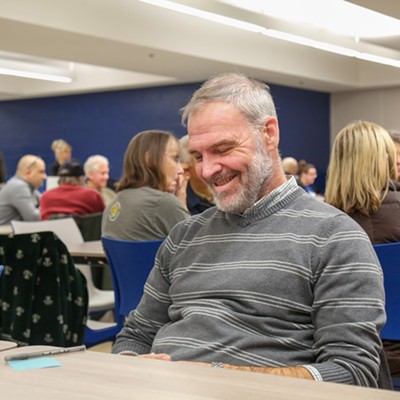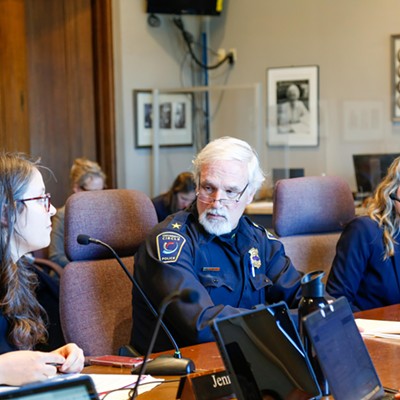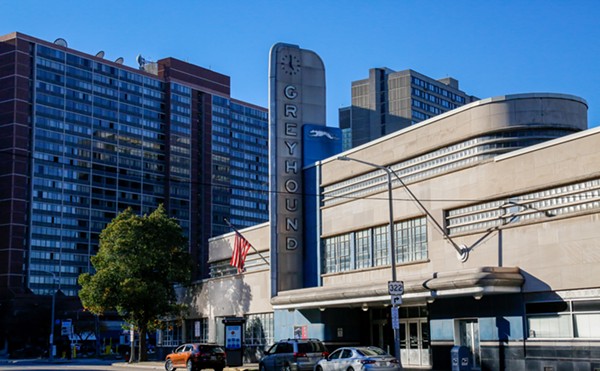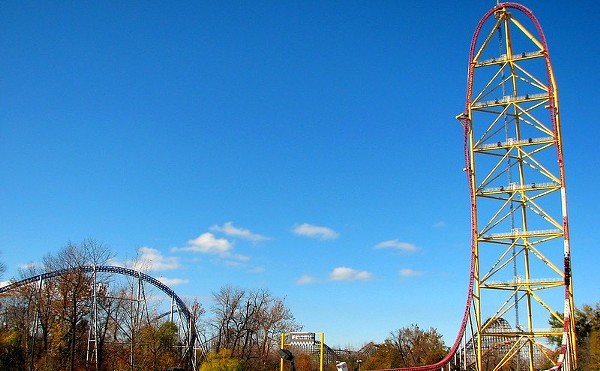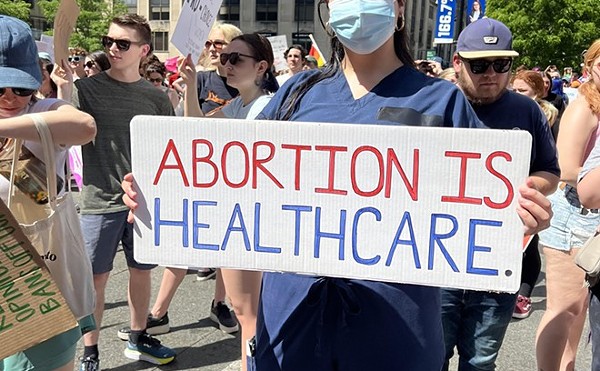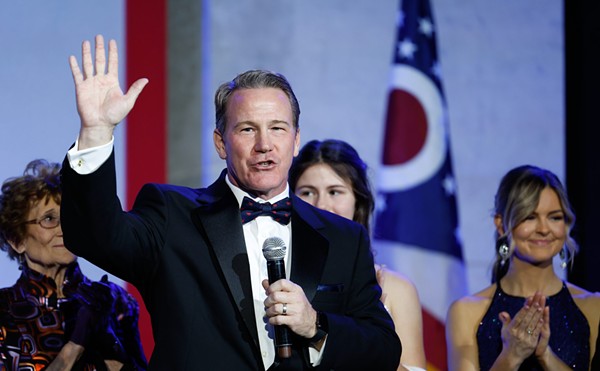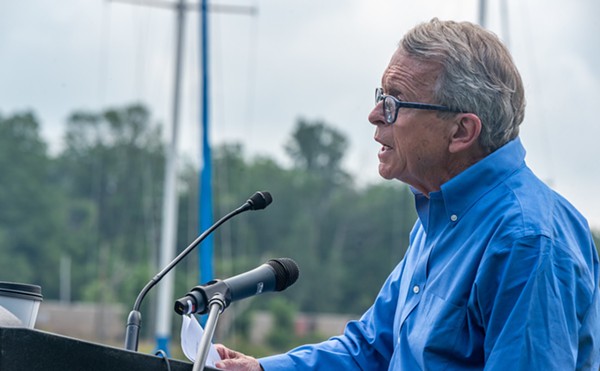How exactly do city and civic leaders want to transform the fortunes of Kinsman, one of Cleveland's poorest enclaves? Tear it up and build a road through it. While the idea of a faster commute may sound good to some, the plan could dislodge Barnes and her neighbors from their homes — houses they do not wish to abandon. "We are people with homes paid for," says Barnes. "Some of them don't look too hot, but it's home."
Pushed by the area's business elite and guided by the Ohio Department of Transportation, Cleveland wants to construct a three-mile, 35-mph boulevard to connect the end of interstates 77 and 490 (at East 55th Street) to East 105th Street and the University Circle district. To sweeten the idea for doubters, the road proponents promise that the undertaking will ignite business and job growth in Kinsman and 350 acres of inner city. The target area also includes parts of the Central, Fairfax and North Broadway (in Slavic Village) neighborhoods.
The occupants of up to 123 residential units — homes and apartments — could be displaced, according to officials and a project fact sheet provided by ODOT. Construction activity could affect many more streets. Officials must first map out an exact route for the proposed road. Then the city will attempt to secure $375 million in federal money needed for the project ($15 million in taxpayer money has already been put into the planning of the road).
It's yet another project born from the alliance of government and business, and residents remain suspicious. The idea of building a road through Cleveland's near East Side neighborhoods has surfaced time and again since the late 1950s, say neighbors; its usefulness as a thoroughfare seems to be the only thing that draws the city's interest. Where have city and business leaders been all these years, as Kinsman became the city's industrial dumping ground, streets fell into disrepair, and supermarkets, banks and playgrounds disappeared? Today, the neighborhood is predominantly black (96 percent) and mostly poor — 57 percent living under poverty level, according to Case Western Reserve's NEOCANDO database. (That figure is based on 2000 Census data and is likely higher today).
Now, Barnes and her neighbors fear that the only things they have — their homes and land — will be stripped away. "It's just wrong," says Barnes on a recent afternoon, sitting in an easy chair in her home on Rawlings Avenue. "It's like they're milking the cow — the udder is empty, and they're still pulling on it."
Jerking the udder these days are Cleveland Mayor Frank Jackson and the Greater Cleveland Partnership, the region's influential chamber of commerce/business coalition. Jackson, who used to represent the area (Ward 5) as a councilman, was at one time opposed to any road project. But when business leaders made the golden promise of economic growth in the neighborhood, the mayor jumped on board. (In the past, Jackson has spoken sharply against questionable building projects, including a 1992 proposal by Cuyahoga County to build a jail in the neighborhood: "If they want to improve the area, why not build new homes, places for people to shop?" Jackson was quoted in The Plain Dealer.)
The public face of the Greater Cleveland Partnership for the road project is Terri Hamilton Brown, a former National City Executive, and former head of University Circle Inc. and the Cuyahoga Metropolitan Housing Authority. In an effort to win support for the project, Brown has helped to organize townhall meetings where she and city planners tell residents that officials want to improve the neighborhood. To further market the idea to skeptics, the proponents have dubbed the project "Opportunity Corridor."
That moniker spurred the obvious question: "Opportunity for whom?" For special interests, say critics. Longtime watchdog journalist Roldo Bartimole has blasted the project online and has been especially critical ofPlain Dealer publisher Terry Egger's involvement in the project, calling it a conflict of interest. Roldo says the paper's coverage of the issue is little more than propaganda. Egger is on the board of directors of the Greater Cleveland Partnership and co-chairs its "Opportunity Corridor" steering committee. He is also a trustee for the Cleveland Clinic, which is just minutes from University Circle. Egger declined to be interviewed for this story.
"Corruption doesn't always mean a politician or building inspector taking a pittance of a bribe," writes Roldo. "Corruption comes in many forms. And selling this as a project to help poor people is as sick as it gets."
But pushing the project they are.Scene visited a townhall meeting last week at Elizabeth Baptist Church on Holton Avenue, and two moods prevailed: frustration and resignation.
Councilwoman Phyllis Cleveland, who represents Ward 5, said she understood that the project could "kill the neighborhood" but was willing to hear about possible benefits to the community. "I don't really care about getting people to University Circle any faster, but I see what it can do for the neighborhood," Cleveland told the audience of about 60 people.
When officials opened the floors for questions, Jeff Buster, an activist from Shaker Heights, called the plan to spend millions on the boulevard a "social crime" that exploits a poor community. "Would you raise your hand if the Greater Cleveland Partnership has ever done anything in your neighborhood?" asked Buster (no one did). He suggested that the city use the millions to fix up the streets that exist in disrepair today.
Danny Williams, who lives on Holton Avenue, says he and his wife don't know whether to make essential improvements to their house, like installing new windows, with yet another road project looming over their heads. "We really don't care about the road," says Williams. "Our lives are on hold. We need to know when and how much money."
Emma Barnes and her husband Robert sat in the audience and also chimed in. "We know this is built for the people in Akron and other suburbs," says Robert. "All of this is designed for people out of town."
Officials told residents that a federal program would allow them to relocate to a comparable home, but Robert Barnes wants assurances that any compensation deal is fair. "If you want the land, pay the people for what they've put into it," he said.
Others asked if residents would be able to get jobs and if business leaders had prospects for industry lined up (the answer to the latter was no).
In an interview a few days after the meeting, Brown said she understands people's frustration with the lack of details, but that's why proponents are reaching out to residents now. "We will refine our plan based on what we've heard, and then we will be able to talk specifics about whose property is being touched or not," she says. She told residents that the option to nix the project remains.
As for the suggestion that the money be used to fix up existing infrastructure, Brown says the status quo will not spur growth. "The roads are there now; the land is there now," she says. "That's not causing anybody to build anything."
Save for several businesses and churches — the Orlando Baking Company fills Barnes' street with the scent of bread — the neighborhood looks dangerously desolate. According to proponents, more than 200 of the 350 acres eyed for the project are vacant, but crumbling structures on the brink remain standing. Environmental concerns, including lead hazards, threaten the health of residents, and an ODOT official says testing for environmental dangers is underway as part of the roadway planning.
It's this tough political and physical landscape officials must negotiate, and their feel-good message is not reaching everyone. Antonio Wesley II lives in the path of the highway-to-be, on a small residential street just south of Buckeye called Tennyson. A dreary, abandoned metal works sits across the street from the house Wesley shares with his girlfriend and their two children.
Wesley, 26, grew up in the neighborhood and says he and his young family would rather not leave their home. He only heard about the project from seeing a newspaper article. Someone with a camera taking pictures in the neighborhood (presumably a consultant) also informed him of the plan. Despite his house's location — smack in the middle of the future road — he has yet to hear anything else. The word of opportunity has yet to reach him. "We're still in the dark about it," says Wesley. "We find it disappointing if they go forward with it."

